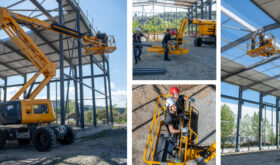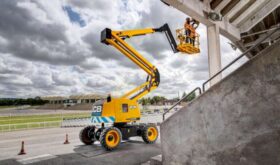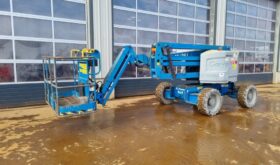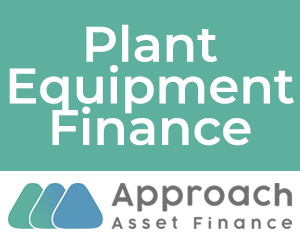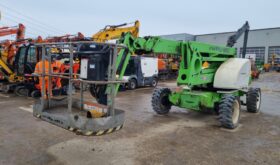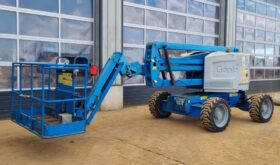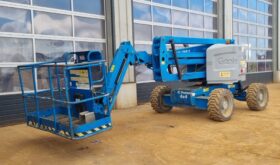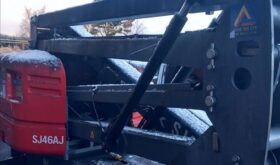Boom Lifts for Sale (66)
A boom lift is a type of aerial work platform that can reach high places that are otherwise inaccessible. It consists of a platform or bucket attached to a hydraulic arm that can extend and rotate. Boom lifts are used for various purposes, such as construction, maintenance, inspection, painting, pruning, and rescue operations.
There are different types of boom lifts, such as telescopic, articulating, and trailer-mounted. Telescopic boom lifts have a straight arm that can extend to a great length, making them suitable for reaching high and far locations. Articulating boom lifts have a jointed arm that can bend and maneuver around obstacles, making them ideal for accessing tight and confined spaces. Trailer-mounted boom lifts are mounted on a trailer that can be towed by a vehicle, making them easy to transport and set up.
More Boom Lifts Info
Boom Lift Pros & Cons
Boom lifts offer many advantages over other types of aerial work platforms, such as scissor lifts and cherry pickers. Boom lifts have a greater reach and versatility, allowing them to access a wider range of areas. Boom lifts also have a higher load capacity and stability, enabling them to carry more weight and equipment. Boom lifts are safer and more efficient than using ladders or scaffolding, as they reduce the risk of falls and injuries.
However, boom lifts also have some drawbacks and risks that need to be considered before using them. Boom lifts require proper training and certification to operate safely and legally. Boom lifts can be affected by weather conditions, such as wind and rain, which can compromise their stability and performance. Boom lifts can also cause damage to the surrounding environment, such as power lines, trees, and buildings, if not used with caution and care.
Therefore, it is important to follow some safety tips when using a boom lift, such as:
– Inspect the boom lift before each use and report any defects or malfunctions.
– Wear appropriate personal protective equipment, such as hard hats, gloves, and harnesses.
– Check the ground conditions and clear any obstacles or hazards before setting up the boom lift.
– Follow the manufacturer’s instructions and specifications for operating the boom lift.
– Do not exceed the maximum load capacity or height limit of the boom lift.
– Do not move the boom lift while the platform is raised or occupied.
– Do not use the boom lift near power lines or other sources of electricity.
– Do not use the boom lift in adverse weather conditions or low visibility.
– Do not leave the boom lift unattended or unlocked when not in use.
Latest News About Boom Lifts
Haulotte Reveals Updated HA20 RTJ
Haulotte has released details of the new generation of HA20 RTJ rough terrain articulating boom. This new version of the machine has been completely redesigned and , Haulotte claim, makes it the safest working at height experience on the market. The HA20 RTJ: productivity and safety The HA20 RTJ is ideal for working on challenging outdoor terrain. Thanks to its articulated arm and its 11.9 m horizontal outreach, the HA20 RTJ overcomes obstacles and reaches the most inaccessible working areas. The Haulotte Dual Reach option offers to increase load and tilt capacities. On the job site, there are many situations…
New JCB Electric & Hybrid Articulated Boom Lifts
JCB is introducing two articulated boom aerial work platforms, with a choice of full battery electric and diesel/electric hybrid drivelines. The A45E and A45EH deliver increased efficiency, enhanced operator access and higher levels of monitoring, to increase productivity for customers. Key features include: Maximum platform height of 13.84m with 7.47m forward reach Battery electric or diesel/electric hybrid drivelines 300kg lift capacity Secondary guarding, puncture-proof tyres, slew lock and emergency override JCB LiveLink real-time remote monitoring High capacity JCB is adding two articulated boom machines. The A45E is a full electric version of the previous AJ48D, offering zero emission working with…
